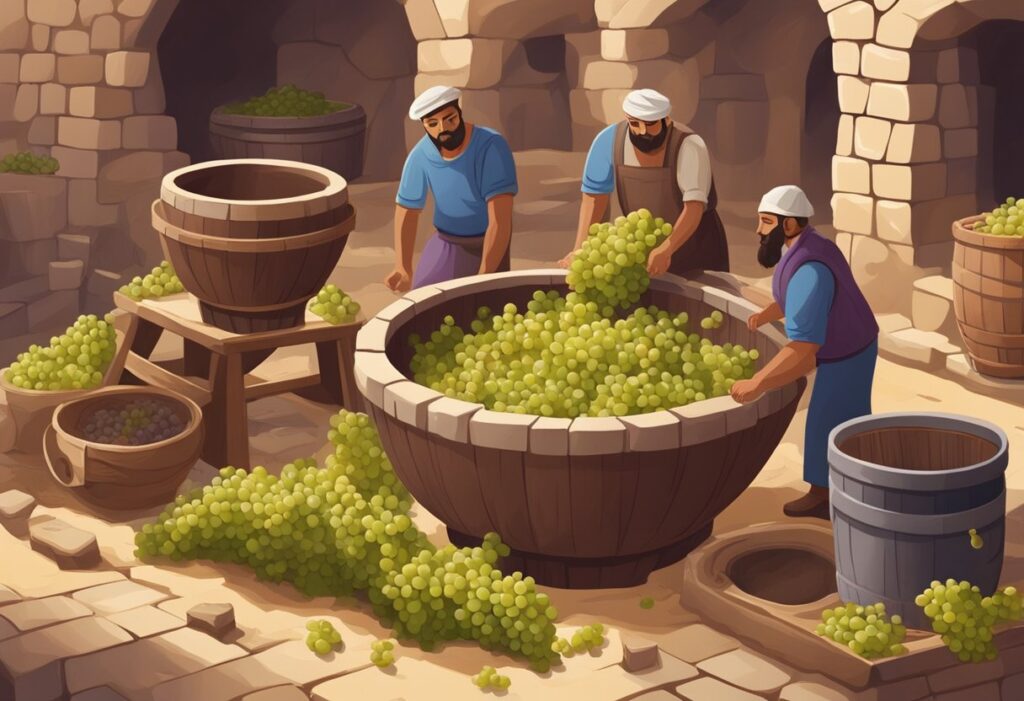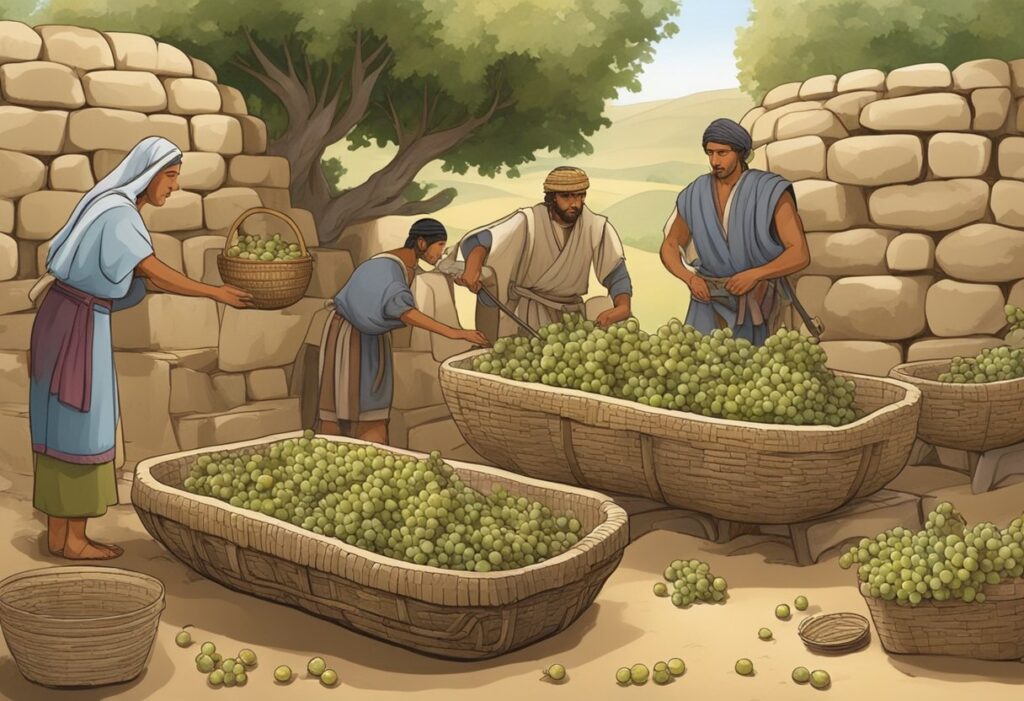Winemaking has roots that trace back thousands of years, originating in ancient civilizations. The earliest evidence of grape domestication and wine production dates to around 6000 BC in the Zagros Mountains of present-day Iran, where archaeological sites reveal jars containing residues of tartaric acid.
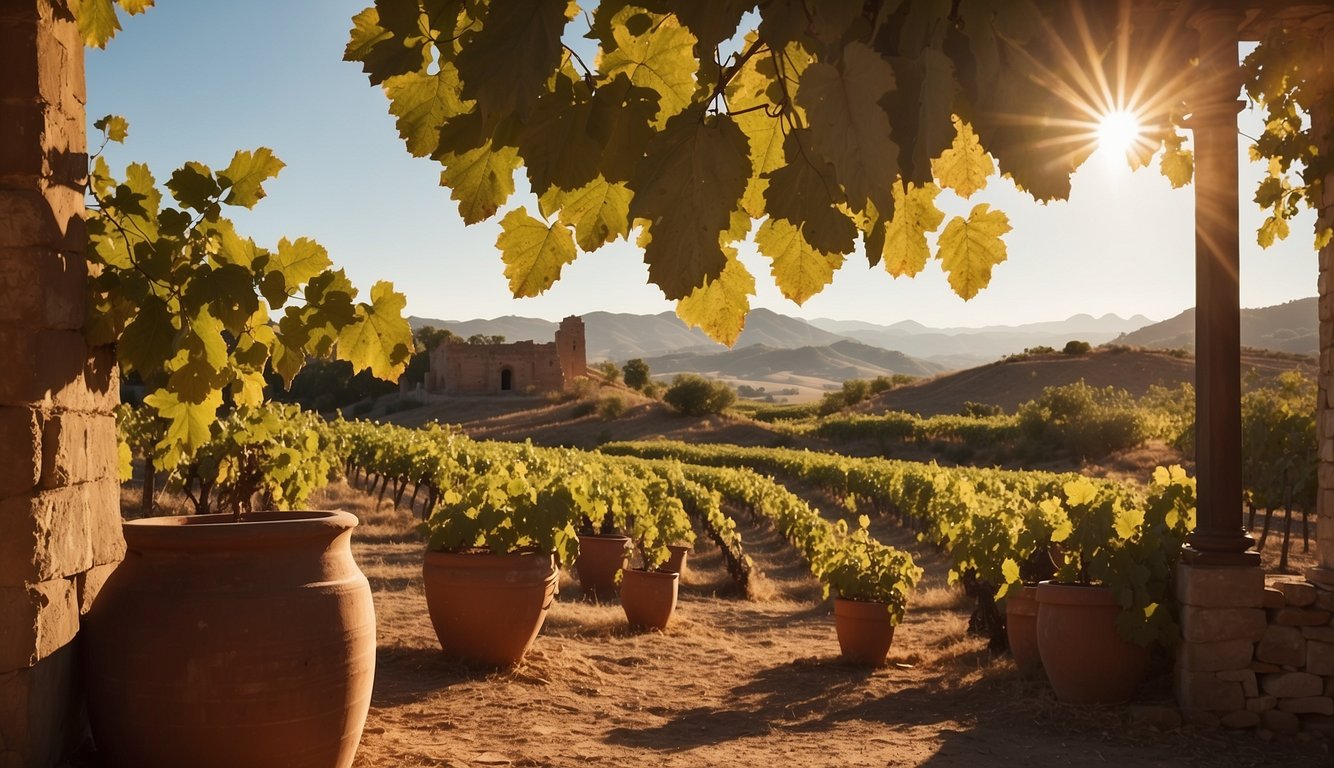
You might be surprised to learn that wine also has deep connections with other ancient civilizations. For instance, the Mediterranean basin has seen a rich history of viticulture since the Neolithic period, about the 7th or 6th millennium BC. Each civilization contributed its unique methods and traditions, shaping the diverse wine culture we enjoy today.
Exploring these early techniques uncovers fascinating stories of innovation and adaptation. From the wine jars of Mesopotamia to the rich viniculture of ancient China, discovering the evolution of winemaking gives us a glimpse into the ingenuity of our ancestors. Don’t miss the chance to delve into this captivating journey through the ages.
Origins of Winemaking in the Fertile Crescent

Ancient winemaking began in the fertile region between the Tigris and Euphrates Rivers.
The Sumerians and Babylonians were some of the earliest groups involved. They harvested grapes, crushed them with their feet, and fermented the juice in large clay vessels known as amphorae.
These vessels were often sealed with clay or pitch to prevent air from spoiling the wine.
Fermentation is a natural process that transforms grape juice into alcohol. Yeast found on grape skins plays a vital role in this transformation. The Sumerians and Babylonians discovered this process thousands of years ago and refined it over time.
The Natufians, an ancient civilization in the Fertile Crescent, are credited with early forms of winemaking Wine 101: Wine An Origin Story Part II: Natufians and the Fertile Crescent. They harvested wild grapes and experimented with fermentation methods.
Mesopotamia was another key region for ancient winemaking. The area’s fertile soil provided ideal conditions for grape domestication. This led to the development of viniculture, the cultivation of grapevines specifically for wine production.
The Egyptians also played a part in the history of winemaking. They adopted techniques from the Fertile Crescent and further advanced the fermentation process.
Wine held great cultural and religious significance in these ancient civilizations. It was used in rituals, feasts, and even as a form of currency.
You can explore more about these fascinating origins and how they shaped the winemaking methods we know today by reading about the ancient winemaking techniques.
Grape Domestication and Early Techniques
Grapes have a rich history that begins with their early domestication and cultivation by ancient civilizations. These early techniques laid the foundation for modern winemaking practices.
Discovery of Grapevines and Cultivation
The domestication of grapes traces back to 6000 BC in the Zagros Mountains of present-day Iran. Early evidence from archaeological sites like Hajji Firuz Tepe shows that ancient people were already producing wine. They discovered grapevines growing in the wild and began to cultivate them for their fruit.
Using tartaric acid residues found in wine jars, scientists confirmed the intentional production of wine. This acid is a key component of grapes and provides proof of early viticulture activities. The people of this era identified and selected the best wild grapevines, leading to the early domestication of grapes.
From Wild Grapes to Deliberate Viniculture
Shifting from wild grapevines to deliberate vineyard cultivation marked a significant step in viticulture. Ancient peoples began selecting wild grapevines that produced the best fruit and seeds. They replanted these vines to create more reliable grape sources. This process eventually led to the development of the Vitis vinifera species.
Simultaneously, in the Caucasus region, wine grapes were also being domesticated. The early farmers’ careful selection and replanting techniques improved grape quality. Over time, they developed more advanced winemaking skills. These early techniques involved crushing the grapes and fermenting the juice in jars or large containers.
By intentionally cultivating grapevines and enhancing winemaking methods, ancient civilizations laid the groundwork for today’s viticulture.
Winemaking Practices and Trade in Antiquity
Ancient winemaking involved a range of sophisticated practices to ensure both quality and preservation. The trade of wine relied heavily on the use of specialized containers, ensuring the product reached distant markets intact.
Preserving and Storing Ancient Wine
Preserving wine in ancient times was crucial to prevent spoilage. One common method was storing wine in clay vessels called amphorae. These jars were often sealed with clay or pitch to keep air out and maintain freshness. Grapes were typically crushed using wine presses, and the juice was fermented in these pottery vessels to create the wine.
Additives played a vital role as well. For example, the ancient Greeks and Romans added tree resins to prevent spoilage. They believed this not only preserved the wine but also improved its flavor. Additionally, skins from the grapes were sometimes fermented with the juice to add tannins and deepen the wine’s color and complexity.
Storing wine in these large vessels made it possible to keep the wine for extended periods. Proper sealing and the use of additives contributed to the longevity and quality of the wine, making it suitable for trade and consumption both locally and internationally.
The Role of Amphorae in Wine Trade
In ancient times, the wine trade was facilitated by the use of amphorae. These clay vessels were designed to transport wine safely over long distances. Their sturdy structure and ability to be sealed tightly meant that the wine could withstand the rigors of sea and land travel. You’ll often find these vessels depicted in old paintings, showing their importance in daily life and commerce.
Amphorae varied in shape and size, adapted for different types of wine and transport needs. This standardized container helped in the efficient loading of ships, maximizing the amount of wine that could be transported. Greek and Roman merchants used these containers to export wine across the Mediterranean, reaching places as far as Egypt and the Near East.
The identification of specific wine jars also allowed for quality control. Different regions developed unique styles, which became synonymous with their reputation for quality wine. Customers knew that an amphora with particular markings held wine from a well-regarded vineyard, ensuring trust in the product they purchased.
Cultural Significance and Technological Advances
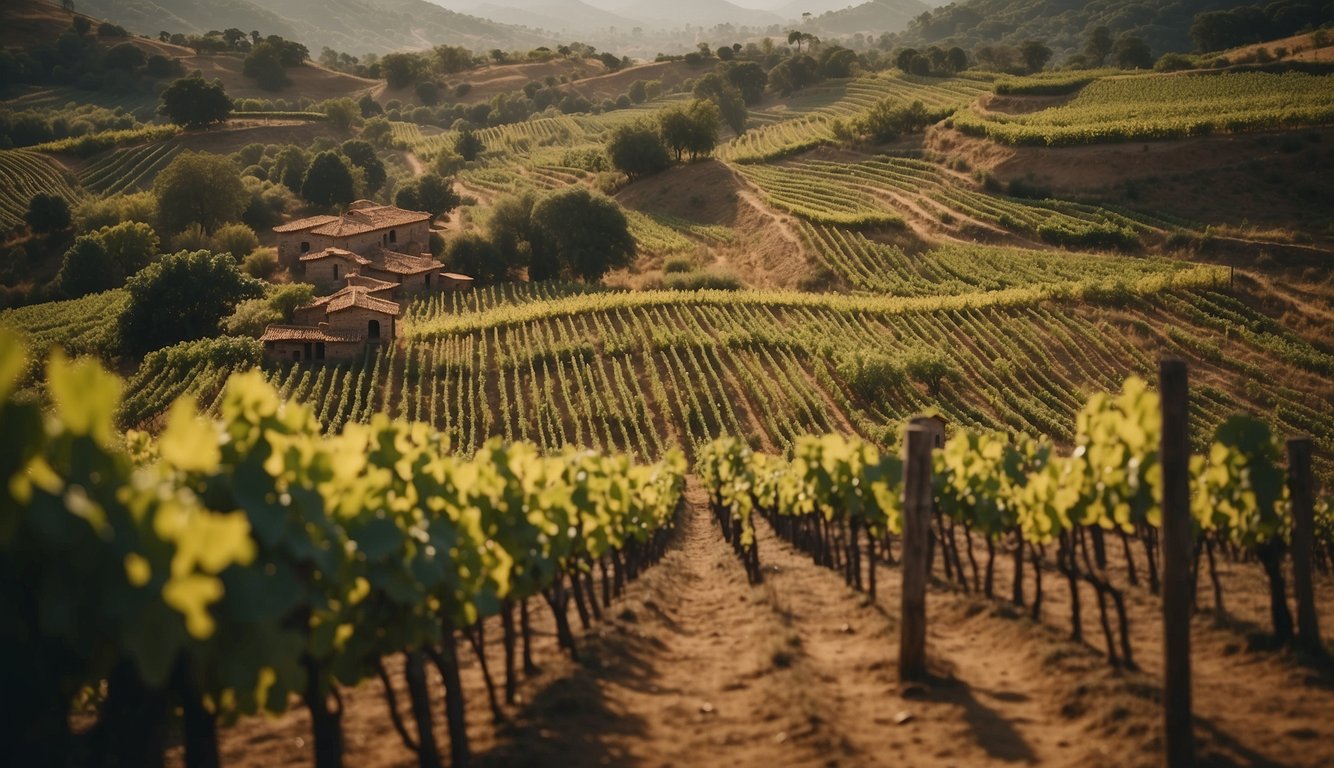
Ancient civilizations deeply valued wine, intertwining it with both their daily lives and their technological progress. They used wine in rituals and made significant advances in winemaking techniques.
Gods and Festivities: Wine in Religion and Society
Wine played an important role in the religious and social life of ancient civilizations. The Greeks revered Dionysus, the god of wine, celebrating him with grand festivals. These gatherings were marked by music, dance, and, of course, wine consumption. In Rome, similar festivities honored Bacchus, their counterpart to Dionysus.
In Egypt, wine held a sacred status among the elites and pharaohs. They believed it was a gift from the gods, used in religious rituals and buried with the dead in special tombs. The iconography and inscriptions often depicted scenes involving wine, showing its integral role in honoring the gods and the deceased.
Technology and Innovation in Ancient Winemaking
Ancient winemakers demonstrated remarkable technological ingenuity. Innovations included fermentation techniques and storage solutions that preserved wine’s quality. McGovern, a leading scholar in viniculture, highlighted how ancient winemakers understood the importance of controlling oxygen exposure during fermentation.
The Greeks and Romans used clay amphorae for storage, which were often sealed with clay or resin to protect the wine from becoming vinegar. They also experimented with mixing wine with honey and spices to improve taste and longevity. These technological advances helped spread winemaking practices throughout the ancient world, leaving a lasting legacy on the craft of winemaking.
Learn more about these fascinating aspects from Wine in Antiquity.
Archaeological Evidence and Academic Insights
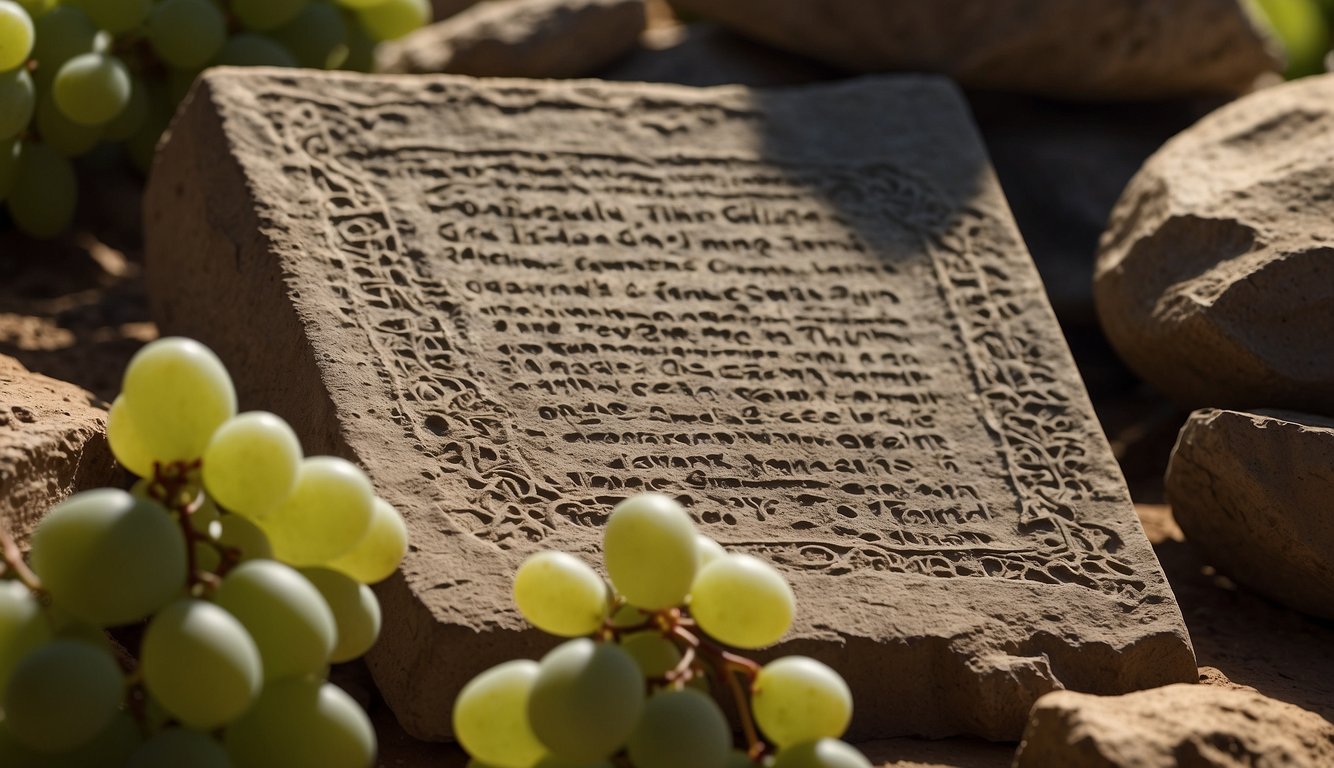
Archaeological evidence and academic research provide a deep look into the origins and spread of winemaking. These findings show the significant role wine played in ancient civilizations.
Notable Archaeological Finds
Recent studies have revealed the presence of early winemaking in the Neolithic period. For example, archaeologists have discovered wine storage vessels dating back to the 6th millennium BC in the South Caucasus. These findings, marked by archaeochemical tests, provide concrete evidence of early viniculture.
In addition, the Levant region also yielded important discoveries. Grapevine seeds and wine residues found in ancient pottery offer insights into the Chalcolithic and Iron Age practices. Hovhannisyan and other researchers have contributed to understanding these early stages in Western Asia.
The works of experts like Thurmond, Dodd, and Charters have further enriched our knowledge, especially in Roman and pre-Roman contexts. You can explore these findings in the detailed archaeological evidence presented in recent research.
Scholarly Research and Historical Geography
The academic community continues to explore the depth of winemaking’s history. Johnson has spearheaded studies that chart the spread from the Mediterranean basin to other parts of the ancient world. Scholars have noted that wine culture was integral to social and religious practices.
The use of new methodologies has allowed for a more nuanced understanding of historical geography. For instance, archaeobotanical data from the Levant illustrates how grape cultivation practices evolved over time.
Research published on platforms like ResearchGate aggregates findings from various regions, providing a comprehensive perspective. This includes studies on weather patterns, soil types, and trade routes that influenced viticulture.
Through these insights, you gain a clearer picture of how wine became a staple across different ancient civilizations. The combined work of archaeologists and historians paints a rich tapestry of the early days of winemaking.
Wine’s Global Journey and Modern Revival
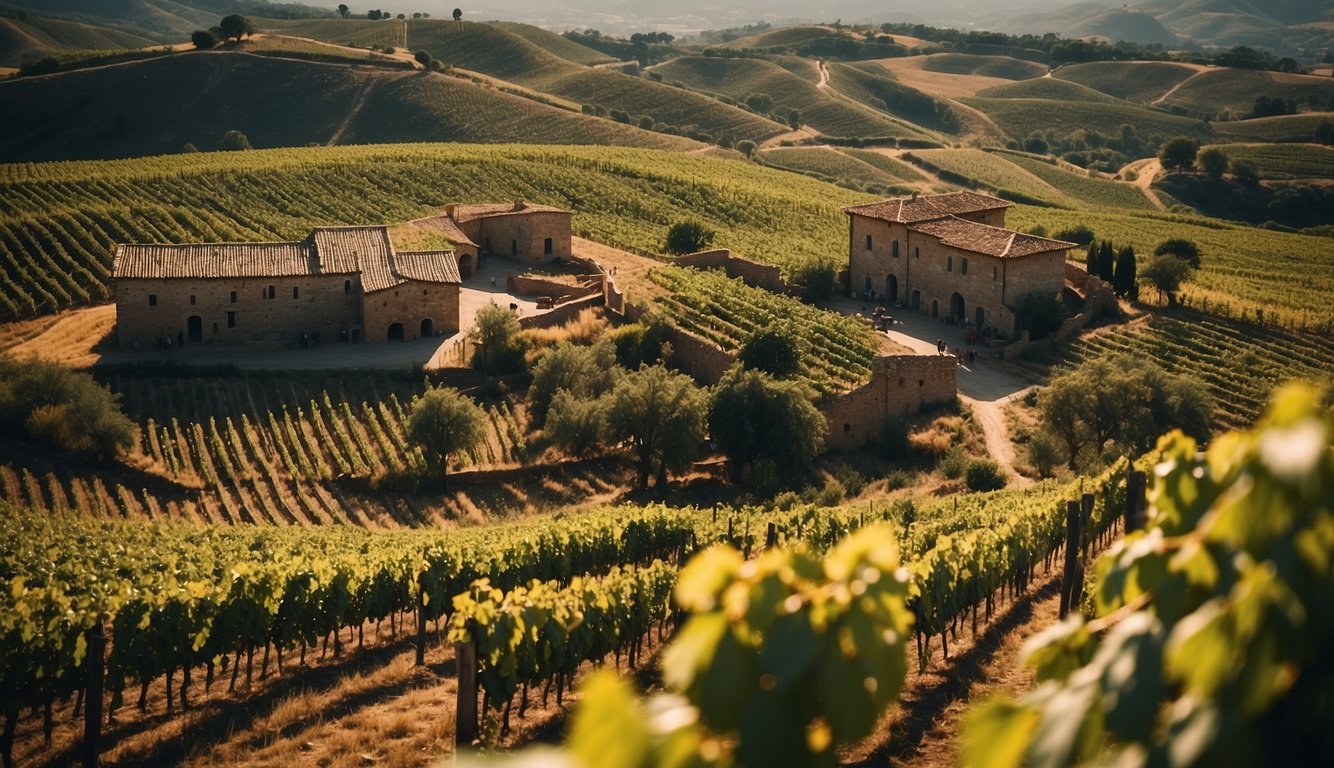
Wine has traveled across centuries and continents, starting from the ancient Mediterranean Basin. Here, civilizations like those in Lebanon and Israel began early wine production using the vinifera grape.
In the South Caucasus, places like Georgia and Armenia are known for their ancient winemaking traditions. They have been crucial in reviving historic methods to produce wine today. This region is often celebrated as one of the birthplaces of wine.
Next, the trend spread to the Iberian Peninsula, where Spain and Portugal developed their unique styles of wine using local grapes. Today, these traditions continue to thrive, drawing wine enthusiasts from all over.
Moving across the ocean, the New World regions such as California have taken these ancient traditions and modernized them. California is now one of the leading producers of wine, blending tradition with new techniques.
Modern wine professionals are looking back to ancient methods to improve and diversify wine production. This revival includes traditional fermented beverages and methods that once seemed lost to time.
Today, there’s a fascinating blend of old and new. Whether you’re exploring an ancient vineyard in the Mediterranean or a modern winery in California, the journey of wine continues to evolve. This global revival keeps the rich history of wine alive, connecting you to a tradition that spans millennia.
